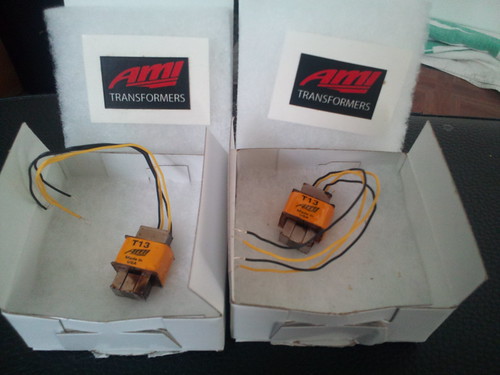with nothing connected to the Front Capsule nor Rear Capsule ( important )For the sine Tone Method and THD Method : use the big RT and SW Pad on the board, RT + ,SW -
feed it 0db (0.775VAC) at 1Khz and tweak the pot , if using your Daw as sine tone ,you should be able to hear what come from the mike with headphone or something you need to be able to ear separtely what come from the mike, tweak the pot fully in 1 way and then fully the other way you should ear the sounds come louder and then get to almost dissapear, what you need to do is to tweak just after it becomes louder and there is no more Fizz in the sounds, you will clearly ear fizzing when the FET opens, just a bit past this point is the good approximative Bias, if you go too Far the Signal will becomes fizzy again but more subtile past this point.( easier to see on a scope) At this point the method is the same for using the Room capture demo software with the THD Meter you only use the THD Meter as an indicator , when the FET opens the Meter goes up at near 25-30% THD so you can clearly see what happening the more you tweak past the opening point the Less THD on the Meter until your reach about 0.4% thd that is fine. if you go too far the THD will slowly rise backup as the fizz in the sounds as the sine symmetry seen in a scope meter, doing it a couple of times is good pratice and you can actually verify your method with the ending drain Voltage if the ending voltage makes sense.
Hope this helps,
Dany,











![Soldering Iron Kit, 120W LED Digital Advanced Solder Iron Soldering Gun kit, 110V Welding Tools, Smart Temperature Control [356℉-932℉], Extra 5pcs Tips, Auto Sleep, Temp Calibration, Orange](https://m.media-amazon.com/images/I/51sFKu9SdeL._SL500_.jpg)














